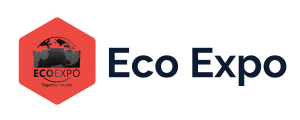Textile manufacturers around the world are looking for innovative ways to reduce environmental impact. Research & amp; the development of dyes has resulted in improved handling, safety, hygiene and accuracy during dye application. These factors are expected to drive the textile dye market during the forecast period.
Dyeing improves the aesthetics of the textile product and makes it more attractive. The trend in the textile industry is rapidly changing and the use of dyes helps textile manufacturers meet the ever-changing needs of end users.
Global textile dyestuff Market was valued US$ 7.34 Bn in 2017 and expected to reach US$ 6.14 Bn by 2026, at a CAGR of 6.14% during the forecast period. In 2020, the size of the global dyestuff market was US $ 2040 million and it is expected to reach US $ 2626.7 million by the end of 2027 with a CAGR of 3.2% between 2021 and 2027.
Textile dyes typically include acid dyes, basic dyes, direct dyes, dispersed dyes, reactive dyes, sulphur dyes and vat dyes. This textile dye is used to make coloured textile fibres. Basic dyes, acid dyes and diffused dyes are mainly used to make black nylon textile fibres. Also, a variety of dyes such as reactive dyes, direct dyes and vat dyes are used to dye nylon textile fibres for specific applications.

By type, the market is divided into cellulose, proteins and synthetics. Geographically the market is divided into North America, Asia-Pacific, Europe, Latin America and the Middle East. Africa. In terms of regions, Asia Pacific is responsible for a significant share of the global textile dyestuff market in 2017.
The dye manufacturing industry is becoming more marginalized and polarized day by day. Although its users are all over the world, only a few countries are producing dye. India’s influence in dye manufacturing is growing day by day. While China is adopting a more appropriate policy for intermediate dye exports, the dye manufacturing industry is moving further towards India. However, China still remains the world’s leading pigment manufacturer.
Textile dye users in Bangladesh have expressed concern over fluctuations in the price and supply of dyes. Everyday manufacturers are trying to choose more efficient and eco-friendly colours to reduce production costs and reduce the impact on the environment.
Textile dye houses are looking for clean dyestuff and processes and so they are working hard to reduce waste. The demand for high-performance dyes, pigments and inks will be on the rise.
The best trade fair organizer in Bangladesh, Eco Expo doing great in this sector.

